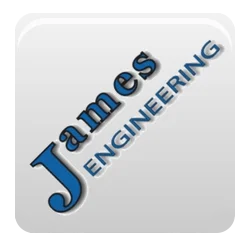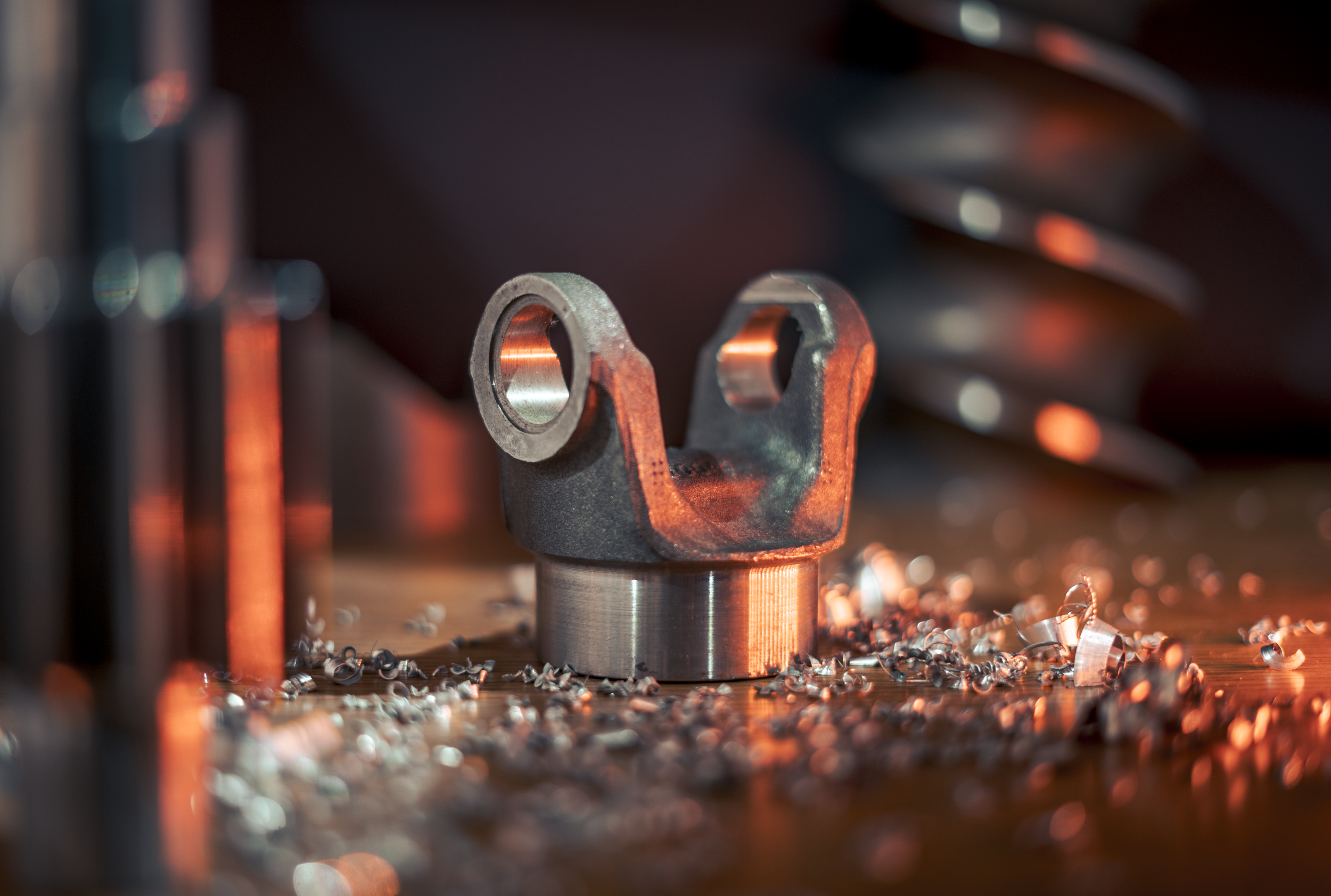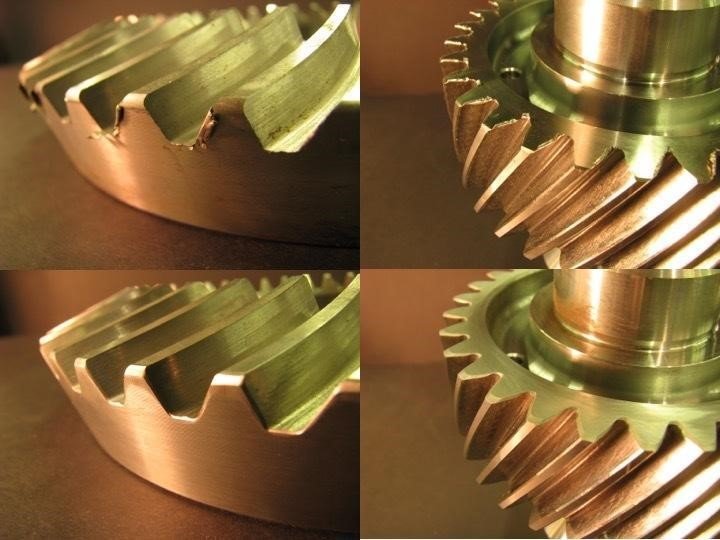Mixed and Rare Metal Finishing
Mixed and Rare Metal Finishing: Deburr Techniques and Benefits
While many metals are straightforward to machine using standard equipment, mixed and rare earth metals possess unique chemical properties that necessitate specialized machining processes.
Understanding Mixed Metals and Why Finishing Mixed and Rare Metals Requires Specialized Techniques, Surface Finishing
Mixed and Rare Metal Finishing: Techniques and Benefits
Machine metal processing is a crucial part of manufacturing, where metal parts are transformed through alterations in shape, dimensions, properties, and finishes to create finished products. While many metals are straightforward to machine using standard equipment, mixed and rare earth metals possess unique chemical properties that necessitate specialized machining processes.
Understanding Mixed Metals
Mixed metals, also known as alloys, are combinations of two or more metals that result in enhanced properties. Here are some common mixed metals, their properties, and applications:
Brass: Known for its malleability and ease of cold and hot forming, brass is used in keys, connectors, radiators, and musical instruments.
Bronze: Appreciated for its corrosion resistance and strength, bronze is ideal for gears, pumps, diaphragms, and architectural fittings.
Copper: Renowned for its ductility and conductivity, copper is extensively used in electrical wiring, semiconductors, and antimicrobial surfaces.
The Role of Rare Earth Metals
Rare earth metals, a group of 17 elements, are not rare in abundance but are seldom found in economically viable concentrations. Their unique properties make them irreplaceable in certain applications, despite their processing challenges.
Notable Rare Metals and Their Uses
Magnesium: Lightweight and strong, magnesium is used in laptop enclosures, automotive transmissions, and small electronics.
Zirconium: With exceptional resistance to hydrochloric acid and ease of welding, zirconium finds use in nuclear reactors, pumps, and chemical processing equipment.
Titanium: Strong, corrosion-resistant, and biocompatible, titanium is essential in medical implants, aerospace components, and high-performance automotive parts.
Finishing Methods for Mixed and Rare Metal Parts
Finishing methods for rare and mixed metal parts and gears are crucial to enhance their performance, durability, and aesthetics. Here are some commonly used finishing techniques:
Electroplating: Applying a thin layer of metal onto the surface of the part using an electric current. This can improve corrosion resistance, reduce friction, and enhance appearance.
Anodizing: An electrochemical process that converts the metal surface into a durable, corrosion-resistant oxide layer. This is particularly common for aluminum parts.
Passivation: Treating metal with an acid solution to remove contaminants and enhance the formation of a protective oxide layer, especially useful for stainless steel parts.
Heat Treatment: Heating and cooling the metal to alter its physical and mechanical properties, such as hardness and strength.
Powder Coating: Applying a dry powder that is then cured under heat to form a protective and decorative layer. This provides a durable and high-quality finish.
Grinding: Using abrasive wheels to remove material and achieve a smooth surface with precise dimensions. This is commonly used for gears to ensure proper meshing and function.
Polishing and Buffing: Mechanical processes that use abrasives to create a smooth, reflective surface. Polishing removes minor imperfections, while buffing produces a high-gloss finish.
Shot Peening: Bombarding the surface with small spherical media to induce compressive stresses, improving fatigue resistance and reducing the risk of stress corrosion cracking.
Laser Cladding: Using a laser to melt and fuse a coating material onto the surface of the part, providing enhanced wear and corrosion resistance.
Chemical Vapor Deposition (CVD): Depositing thin films of material onto the surface through chemical processes, providing excellent hardness and corrosion resistance.
Physical Vapor Deposition (PVD): Depositing thin films of material through physical processes, such as sputtering, to achieve superior hardness and wear resistance.
Electropolishing: An electrochemical process that removes a thin layer of material to achieve a smooth, shiny finish and improve corrosion resistance.
Vibratory Finishing: Placing parts in a vibrating container with abrasive media to deburr, clean, and polish the surfaces.
Why Finishing Mixed and Rare Metals Requires Specialized Techniques
Finishing mixed and rare metals is particularly challenging due to their unique chemical and physical properties. These metals often have high strength, hardness, and corrosion resistance, which can make them difficult to machine and finish using standard techniques. The diverse compositions of mixed metals (alloys) can lead to varying reactions during finishing processes, requiring precise control and specialized knowledge to achieve the desired outcomes.
Rare metals, such as titanium and zirconium, have high melting points and react differently to heat and chemical treatments compared to more common metals. Additionally, their surface characteristics can be highly sensitive, necessitating careful handling to avoid damage or degradation.
Specialized Metal Finishing Machines
At James Engineering, we specialize in finishing a variety of mixed and rare metal parts using advanced multi-axis Surface Finishing machinery. Our equipment employs abrasive wheels, rotating brushes, and oscillating discs, enabling us to grind, deburr, round, and polish metal components in a single pass.
Manufacturing metal parts demands not only a deep understanding of materials and machinery but also a precise grasp of their intended applications. At James Engineering, we utilize state-of-the-art finishing machines to optimize the properties of mixed and rare metal parts for a wide range of industries. Our advanced deburr techniques ensure minimal material waste and deliver peak performance, making us a trusted partner for leading manufacturers worldwide.
Contact us today to learn more about our specialized metal part processing services and discover how we can enhance your manufacturing processes.
Unlocking the Power of Hydraulics, Pumps, and Valves
At the core of modern engineering pulses the vital trio of hydraulics, pumps, and valves. These transformative technologies aren’t just tools; they’re the driving force behind industries, enabling precision, power transfer, and unparalleled efficiency across diverse applications.
Understanding Hydraulics: The Power of Fluid Dynamics
At the core of modern engineering pulses the vital trio of hydraulics, pumps, and valves. These transformative technologies aren’t just tools; they’re the driving force behind industries, enabling precision, power transfer, and unparalleled efficiency across diverse applications. Join us as we delve deep into the captivating realm of hydraulics, pumps, and valves, unraveling their significance, real-world applications, and the pioneering manufacturers shaping these dynamic sectors.
Importance in Various Industries
Construction and Infrastructure: Imagine towering cranes effortlessly lifting heavy loads or excavators deftly maneuvering on construction sites. Companies like Caterpillar Inc. and Komatsu Ltd. are renowned for their hydraulic systems powering construction equipment worldwide.
Agriculture: From precision farming to heavy-duty harvesting, hydraulics revolutionize agricultural practices. John Deere's hydraulic solutions in tractors and farm machinery epitomize efficiency and reliability in the field.
Aviation and Aerospace: In the skies, hydraulic systems are the lifeline of aircraft operations. Boeing and Airbus incorporate advanced hydraulic pumps, valves, and actuators from suppliers like Parker Hannifin and Eaton Corporation to ensure safe and precise flight controls.
Automotive Innovation: Your car’s power steering, brakes, and suspension owe their responsiveness to hydraulic systems. Leading automotive suppliers such as Bosch Rexroth and Denso Corporation craft hydraulic components that enhance vehicle performance and safety.
Manufacturing Excellence: Hydraulic presses, robots, and CNC machines drive modern manufacturing. Bosch Rexroth's hydraulic expertise powers industrial machinery, optimizing production processes with unmatched precision.
Key Manufacturers Influencing Industries
Bosch Rexroth AG stands tall as a global leader in hydraulic solutions, catering to automotive, industrial, and mobile applications with unparalleled expertise.
Parker Hannifin Corporation commands respect for its aerospace and industrial hydraulic systems, alongside valves and controls, setting industry standards with each innovation.
Eaton Corporation's influence extends across diverse sectors, from aerospace and automotive to machinery, offering cutting-edge hydraulic components and systems that redefine performance benchmarks.
Caterpillar Inc. dominates the construction and mining equipment landscape, harnessing advanced hydraulics to tackle heavy-duty operations with unmatched precision and reliability.
Nidec Corporation emerges as a pivotal player, revolutionizing hydraulic solutions in various industries with innovative technology and unwavering commitment to excellence.
Wärtsilä Corporation secures its position as a trusted supplier of hydraulic solutions for marine and offshore industries, ensuring reliability and performance even in the most challenging environments.
Education and Innovation
Understanding hydraulics, pumps, and valves is not just essential for engineers and technicians; it’s crucial for anyone curious about modern technology. From elementary principles like Pascal’s Law to advanced electro-hydraulic systems, learning about hydraulics opens doors to innovation and problem-solving across industries.
Powering the World Forward
Hydraulics, pumps, and valves form the backbone of modern engineering, propelling industries toward efficiency, safety, and sustainability. As we embrace technological advancements, education and awareness about these critical components pave the way for groundbreaking innovations and a brighter, more interconnected future. Whether you’re fascinated by machinery or intrigued by aerospace marvels, delving into the world of hydraulics unveils a realm of endless possibilities and engineering marvels shaping our world.
WHAT IS DEBURRING?
What is Deburring? What is the Deburring Process? Exploring Deburr Techniques, Deburring Challenges, and Deburring Solutions!
What is the deburring process?
Exploring Deburr Techniques, Deburring Challenges, and Solutions!
Imagine crafting external gears that mesh seamlessly, internal gears that turn smoothly, or gearboxes that power machines with precision. The secret sauce to this seamless operation? It's all about deburring, a crucial but often underestimated process.
When you dive into manufacturing parts like external gears, internal gears, pinions, pinion shafts, or gearboxes, you're essentially crafting the building blocks of functionality. Every imperfection, no matter how small, can impact the overall performance. That's where deburring steps in, ensuring that these components meet the highest standards of quality and reliability.
Detail of a metal burr. Metal burrs must be removed to ensure safety, functionality, quality control, and optimal performance of metal gears or components in engineering applications.
Understanding Deburring
What is deburring? Deburring is the method of removing unwanted burrs—tiny, often sharp, imperfections—from machined parts. These burrs can result from various manufacturing processes like CNC machining, plasma cutting, or casting. If left untreated, burrs can compromise part functionality, aesthetics, and safety.
Types of Deburring Techniques
Exploring Deburring Techniques and Challenges
Manual Deburring: This traditional method requires skilled operators using tools like scrapers, files, and brushes to remove burrs. While it allows for precision, it is labor-intensive and can be time-consuming, limiting its scalability for large production volumes.
Machine Deburring: Automated deburring machines offer consistent and efficient burr removal, making them indispensable in modern manufacturing. However, challenges such as complex part geometries and varied burr sizes require advanced technologies for optimal results.
Chemical Deburring: While effective for selective burr removal, chemical deburring demands careful handling of chemicals and disposal, requiring strict adherence to safety and environmental regulations.
Abrasive Deburring: Utilizing abrasive materials for mechanical burr removal can generate heat and friction, leading to potential surface damage or tool wear over time.
Electrochemical Deburring (ECM): Although precise, ECM setups can be costly to implement and maintain, requiring skilled technicians for operation and maintenance.
Thermal Deburring: While effective, thermal deburring methods like flame deburring may introduce heat-related distortions in parts, necessitating additional quality control measures.
Cryogenic Deburring: While innovative, cryogenic deburring requires specialized equipment and expertise in handling cryogenic fluids, adding complexity and cost to the process.
Ultrasonic Deburring: While capable of reaching intricate areas, ultrasonic deburring may struggle with harder materials or thicker burrs, requiring adjustments or supplementary processes.
Brush Deburring: While versatile, brush deburring methods may require frequent tool changes or maintenance, impacting production uptime and efficiency.
Waterjet Deburring: While precise and non-destructive, waterjet deburring may struggle with certain materials or intricate geometries, requiring careful process optimization.
The best machine deburring solution combines multi-axis capability with compliant technology. Unlike rigid robotic systems, multi-axis machines with compliant features offer greater flexibility to adapt to varying part geometries and burr locations. They can adjust tool angles and pressures dynamically, ensuring consistent and precise deburring across different parts. Additionally, machines with various tool options provide versatility, allowing for the use of different deburring methods depending on the part's specific requirements. This flexibility translates to improved productivity, reduced setup times, and enhanced overall quality in the deburring process.
Challenges in Deburring
Despite its importance, deburring poses several challenges:
Complex Part Geometries: Components like external gears, internal gears, and gearboxes often feature intricate geometries, making manual deburring impractical and time-consuming.
Burr Consistency: Burrs can vary in size, shape, and location, requiring tailored deburring solutions for optimal results.
Time and Cost: Manual deburring is labor-intensive and prone to inconsistencies, leading to increased production time and costs.
Automated Deburring Solutions
Automated deburring machines equipped with multi-axis compliant technology, like The MAX, offer unparalleled advantages over traditional deburring methods.
Here's a closer look at why they stand out:
Precision: Multi-axis compliant technology integrates CNC deburring tools into automated machines, ensuring precise burr removal even in complex part geometries like pinions and pinion shafts. This precision enhances part quality and functionality, meeting industry standards effectively.
Consistency: These machines deliver consistent results across batches, reducing rework and ensuring consistent part quality. This reliability is crucial for maintaining product integrity and customer satisfaction.
Efficiency: By automating the deburring process, manufacturers save time, reduce labor costs, and boost overall production efficiency. This efficiency improvement is key for meeting production targets and staying competitive in the market.
Flexibility: Multi-axis compliant technology allows for versatile tool movements, adapting to different part shapes and sizes seamlessly. This flexibility optimizes workflow and resource utilization, enhancing productivity and reducing downtime.
Quality Assurance: With precise control and monitoring capabilities, multi-axis compliant machines ensure stringent quality standards are consistently met. This quality assurance is vital for industries demanding precision and reliability, such as automotive, aerospace, and medical device manufacturing.
The integration of multi-axis compliant technology elevates deburring processes to new levels, offering unmatched precision, consistency, efficiency, flexibility, and quality assurance in modern manufacturing environments. These advantages make them indispensable tools for achieving superior results in part finishing and production optimization.
Choosing the Right Deburring Equipment
When selecting deburring equipment, consider factors such as part complexity, production volume, and budget. Consult reputable deburring machine manufacturers like James Engineering, the deburr master known for their innovative deburring solutions tailored to various industries' needs. Top manufacturing companies go to the deburring experts for the best deburring machines.
Need a Chamfering Machine? Click Here
Burr Removal Methods
Exploring Deburring Tools and Techniques
When it comes to precision manufacturing, the right deburring tools and techniques are essential for achieving flawless finishes and optimal part functionality. Let's delve into the various deburring tools and their unique capabilities:
Deburring Brushes: Specialized brushes designed for deburring tasks effectively remove burrs from machined parts, ensuring smooth and precise edges crucial for product quality and performance.
Abrasive Wheels: Utilizing abrasive materials, such as grinding wheels or belts, abrasive deburring tools remove burrs and imperfections from metal surfaces, providing a consistent and uniform finish.
Chamfering Tools: Chamfering tools bevel edges, improving part aesthetics and reducing sharp edges, enhancing safety during handling and assembly processes.
Radius Forming Attachments: These attachments create precise radii on parts, essential for components like gearboxes and mechanical parts where rounded edges are critical for functionality and longevity.
Polishing Equipment: Polishing tools and materials, such as polishing brushes or compounds, achieve high-quality surface finishes, enhancing part appearance and meeting stringent industry standards.
Filing Tools: Filing tools are used to remove excess material and refine surfaces, maintaining precise dimensions and ensuring smooth edges for seamless part integration.
Washing Systems: Integrated washing systems clean parts thoroughly, removing debris, contaminants, and residual materials post-deburring, ensuring optimal cleanliness for subsequent processes or assembly.
In conclusion, understanding the deburring process, utilizing advanced deburring machines and tools, and choosing the right deburring method for your application are crucial steps in ensuring high-quality, precise machined parts.
By prioritizing deburring before chamfering, polishing, or other finishing processes, manufacturers can uphold the standards necessary for top-notch products in industries relying on precision components like automotive, aerospace, and machinery manufacturing.
If you are looking for the best deburring machines that have stood the test of time for their durability and used by top manufacturing companies across the world for chamfering and all purpose gear and part finishing.
Contact James Engineering at Sales@James-Engineering.com












